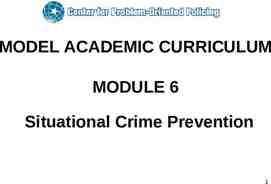The Therapeutic Value of Play HD 306: Play in Childhood Group 1:
34 Slides1.50 MB

The Therapeutic Value of Play HD 306: Play in Childhood Group 1: Stacy Moralez Ashley Foss Dionne Riddle

“You can discover more about a person in an hour of play than in a year of conversation.” -Plato

Definition of Play Therapy “A dynamic interpersonal relationship between a child (or person of any age) and a therapist trained in play therapy procedures who provides selected play materials and facilitates the development of a safe relationship for the child (or person of any age) to fully express and explore self (feelings, thoughts, experiences, and behaviors) through play, the child's natural medium of communication, for optimal growth and development.” (Landreth, 2002)

Definition of Play continued Play therapy builds on the natural way that children learn about themselves and their relationships in the world around them (Axline, 1950). Through play therapy, children learn to communicate with others, express feelings, modify behavior, develop problemsolving skills, and learn a variety of ways of relating to others. Play provides a safe psychological distance from their problems and allows expression of thoughts and feelings appropriate to their development.

What is Play Therapy? "Play therapy refers to a method of psychotherapy with children in which a therapist uses a child's fantasies and the symbolic meanings of his or her play as a medium for understanding and communication with the child." (minddisorders.com)

What is Play Therapy continued Symbolic language Natural medium of child’s self-expression. Pleasurable and intrinsically motivating. Play has a makebelieve quality and is flexible. Freedom of choice. Evokes fantasies and unconscious feelings. Offers familiar tools. Safe place to act out feelings, to gain understanding, and to change.

History of Play Therapy Little Hans - Freud's work with a phobia David Levy – Release Therapy Virginia Axline (1947) - Play Therapy Bernard G. Guerney, Jr. (1964). Filial therapy Clark Moustakes, (1973). Children in Play Therapy - relationship based Filial Therapy constructed by Bernard and Louise Guerney

History of Play Therapy In 1909, Sigmund Freud was the first psychologist to document how play can be used therapeutically. The title was “Little Hans.” Hans was a five year old boy with a phobia. He saw fantasy as a way to gain access to their psyche, stating that play acts like a mirror to their subconscious, allowing play to be used as a diagnostic and therapeutic tool. In 1953, Clark Moustakas wrote his first book, Children in Play Therapy. Freud and other psychologists began using play as a means of therapy to gain better understanding of what the children were experiencing physically and/or emotionally. In 1955, Gove Hambidge expanded on Levy’s work emphasizing a “Structured Play Therapy” model, which was more direct in introducing situations. The format of the approach was to establish rapport, recreate the stress-evoking situation, play out the situation and then free play to recover. The mid-1900s was a time when different types of play therapy were established and multiple techniques for practicing play therapy were discovered. In the 1960s, parents began using play therapy on their children at home, called Filial Therapy (constructed by Bernard and Louise Guerney). In 1938, David Levy developed a technique he called release therapy. His technique emphasized a structured approach. A child, who had experienced a specific stressful situation, would be allowed to engage in free play. Subsequently, the therapist would introduce play materials related to the stress-evoking situation allowing the child to reenact the traumatic event and release the associated emotions. Subsequently, play therapy was now being used at school by counselors; Alexander (1964), Landreth (1969), Muro (1968), Myrick and Holdin (1971), Nelson (1966) and Waterland (1970). In the 1940s Virginia Axline began to develop nondirective play therapy, the principles of which were based on Carl Rogers' newly emerging person-centered approach. In her first published work she establishes the eight basic principles of nondirective play therapy Currently, play therapy consists of several models which involves (and is not limited to) family therapy and cognitive behavior therapy. Play therapy is evolving to better therapeutic services in order to provide the most effective solutions to troubled children.

Types of Play Therapy Directive – Child centered Non-directive – Client centered

Directive Using directives to guide the child through play will cause a faster change than is generated by nondirective play therapy. More commonly used with trauma victims and involves the "talk" therapy Common medias are creating stories with the dolls and stuffed animals is a common method

Non-Directive Encouraged to work toward their own solutions to problems through play It is typically classified as a psychodynamic therapy Non-intrusive Has few boundary conditions Common medias are sand play, art play and toys

Filial Play Therapy Child Parent Relationship Therapy Parent conducted Play-based models Trained by Play Therapist Works at closing a communication gap that may have existed

Filial Therapy continued Child Parent Relationship Therapy In 2006, Garry Landreth and Sue Bratton developed a highly researched and structured way of teaching parents to engage in therapeutic play with their children. It is based on a supervised entry level training in child centered play therapy. Parents can improve their children’s behavior and help them overcome emotional problems by engaging their children in forms of play that replicate the playful, attuned, and empathic interactions of a parent with an infant

Reasons for Play Therapy Toys act as the child’s words and play is the child’s language. Play therapy is to children what counseling or psychotherapy is to adults. The idea of being in control of the play can help give a child confidence. Play is a universally important means for expression across cultures. Children reflect on relationships and experiences with others, express needs, release unacceptable impulses, and experiment with solutions through play.

Traits of a Child Needing Play Therapy Poor academic performance Poor relationship with peers Passivity, withdrawal Reading problems Bedwetting after training Social immaturity Refusal to speak, selectively mute Preoccupation with sex Excessive worrying, anger, sadness or anxiety Phobias Aggressive behaviors or acting out Victimize others Breaking the law Attempting suicide Self harm

Beneficial to Many Types of Children’s Issues Neglect Family violence, sexual, emotional Divorce, separation, or other changes in family situation Severe burns or disfigurement Chronic illness Loss of hearing, sight or other physical challenges Grief Hospitalization Learning disabilities or mental challenges Experienced trauma Have family members with mental illness

Mental Health Issues That Benefit Reactive attachment disorder Oppositional Defiant Disorder Attention Deficit Disorder w/without hyperactivity Asperger’s Syndrome Autism Spectrum (higher end of spectrum)

“Play permits the child to resolve in symbolic form unsolved problems of the past and to cope directly or symbolically with present concerns. It is also his most significant tool for preparing himself for the future and its tasks.” -Bruno Bettelheim

Methods of Play Therapy Clay Puppets Art Drawing Fans Music Sand play Toys Dramatic Play

Methods of Play

Types of Toys and Their Benefits Scary – help children deal with fears Plastic monsters, bugs, bears, lions Nurturing – play out family relationships Assorted dolls of all ages, sizes, gender, and doll supplies. Aggressive toys – help a child to act out anger and aggression Guns, knives, soldiers Expressive Toys – help a child explore feelings Crayons, paint, paper Pretend/Fantasy – explore different roles, hidden feelings Masks, hats, role playing, dramatic play area

Techniques of Play Therapy The most common types of play therapy include art (drawing, painting), music, clay, sensory play (sand, for example), storytelling, puppets, creative visualization, and board games. The first play therapy techniques often used on a child are drawing and painting. A child is given a blank page onto which they can create whatever they want, often revealing much about their inner worries and concerns. Music works in much the same fashion, allowing children to express their emotions and manipulate their feelings through the energy of the music. Molding and manipulating clay allows kids to build up and even destroy what they have made, expelling or physically manipulating their emotions using the clay.

Techniques of Play continued One of the most common play therapy techniques is the use of story-making, which is the basis of sand play, therapeutic storytelling, and puppetry. – Sand play involves choosing miniatures to manipulate within a sand tray world which the child can create and control. – By listening to the story and working with the child on the course of the story, a therapist can help the child express emotions and work through their feelings. – This same technique can be used with therapeutic storytelling during which a story, relating to the child’s issues, is told so that emotions can be explored using imaginary characters, and a positive outcome can be controlled. – Puppets are another method for a child, or a therapist acting for the child, to safely explore a situation and control the outcome or explore various outcomes.

Techniques of Play continued Therapeutic board games are one of the play therapy techniques which afford a more structured type of exploration for these children. The games are geared to mimic a real world situation, and allow the child to safely control the outcome. Creative visualization is a play therapy technique where the child is guided to visualize positive outcomes for difficult and perhaps even anger-provoking situations. This technique is a helpful tool, taught to children at a play therapy session, and sometimes practiced alone or with a parent at home."

Statistics of Play Therapy Effectiveness The research shown was obtained in SEPACTO, the UK's database of play therapy clinical outcomes, developed and managed by PTUK (Play Therapy United Kingdom). These are the results of a study of 179 girls and 333 boys who have received play therapy in the last 5 years. The results show a major positive change and proves that play therapy can be used for emotional, behavioral, and mental health issues. 77% Significant positive change 11% Marginal positive change 6% No change 8% Marginal negative change 9% Significant negative change http://www.playtherapy.org/research.html

Why Use Play Therapy? "Play therapy can be used as a confirmatory evaluating tool, allowing children to safely reveal their emotional, developmental, or psychological problems, and also as a therapeutic tool to help children overcome their problems." (Wisegeek.com) "Play therapy is used to treat problems that are interfering with the child's normal development.Children communicate their thoughts and feelings through play more naturally than they do through verbal communication. As the child plays, the therapist to recognize themes and patterns or ways of using the materials that are important to the child. Over time, the clinician helps the child begin to make meaning out of the play. This is important because the play reflects issues which are important to the child and typically relevant to their difficulties." (minddisorders.com)

Why Use Play Therapy continued Play therapy can be used for a multitude of reasons. From emotional distress to behavior issues, the techniques that play therapy has to offer can provide a helpful solution to these problems. Emotional issues that may benefit from play therapy include family problems, like violence within the home, death of a loved one, or divorce. An anxious child who is fearful (and perhaps having nightmares/night terrors that are keeping the child from functioning) can get to the root of the fears with play therapy. Children who are victims of abuse (emotional, physical, and sexual) can use play therapy to learn to cope with their past and gain a positive outlook for the future. Safe play is very therapeutic in and of itself. Play is a way of de-stressing, a way to be creative, and a way to laugh. Through play, people develop imagination, problem solving skills, flexibility, social skills, trust, and intimacy. Adding play to your life will lead to less depression, less anxiety, less stress, and less aggression.

“Play gives children the opportunity to search for and experiment with alternative solutions to their problems.” -Jerome Singer

Goals of Play Therapy Become more responsible for behaviors and develop more successful strategies Develop new and creative solutions to problems Develop respect and acceptance of self and others Learn to experience and express emotion Cultivate empathy and respect for thoughts and feelings of others Learn new social skills and relational skills with family Develop self-efficacy and thus a better assuredness about their abilities

References Framingham, J. (2006). Helping a Child Through Play Therapy. Psych Central. Retrieved on July 28, 2014, from http://psychcentral.com/lib/helping-a-child-through-play-therapy/000114 Video, centerofplaytherapy.com, Created by: Dee Ray, PhD, LPC-S, NCC, RPT-S, Professor-Counseling Program, Director-Child and Family Resource Clinic, University of North Texas “Therapeutic Value of Play.” Abuse Consultants. http://www.abuseconsultants.com/rdirctrl/index.asp?PageDirect PlayValue 1 Nov. 2010 Chazan, Saralea Reviewed By: Johanna Krout Tabin, Spring 2003, pp. 25-27: Jessica Kingsley, 2002 Landreth, G. L. (2002). Play therapy: The art of the relationship. (2nd ed.). New York: Brunner-Routledge Axline, V. (1950). Entering the child's world via play experiences. Progressive Education, 27, 68-75. Rye N. 2010. Child-Centered Play Therapy. In: JH Stone, M Blouin, editors. International Encyclopedia of Rehabilitation. Available online: http//cirrie.buffalo.edu/encyclopedia/en/article/275/

References continued Harkin, Rebecca, and Allegra Lingo. "What Are The Different Types of Play Therapy Techniques?." WiseGeek. Conjecture, 16 July 2014. Web. 30 July 2014. http://www.wisegeek.com/what-are-the-different-types-of-play-therapy-techniques.htm . "Mental Disorders." Play therapy. N.p., n.d. Web. 30 July 2014. http://www.minddisorders.com/Ob-Ps/Play-therapy.html . "Play Therapy." Wikipedia. Wikimedia Foundation, n.d. Web. 30 July 2014. http://en.wikipedia.org/wiki/Play therapy#History "Play Therapy - An information resource for play and creative arts therapies." Play Therapy - An information resource for play and creative arts therapies. N.p., n.d. Web. 30 July 2014. http://www.playtherapy.org/research.html "The Play and Playground Encyclopedia ." Therapeutic Value of Play. N.p., n.d. Web. 30 July 2014. http://www.pgpedia.com/t/therapeutic-value-play . "The Power of Play Therapy." The Power of Play Therapy. N.p., n.d. Web. 30 July 2014. http://www.socialworktoday.com/archive/ "The Therapeutic Value of Play vs. Play Deprivation." Discussing Dissociation. N.p., n.d. Web. 30 July 2014. http://discussingdissociation.com/2013/12/07/the-therapeutic-value-of-play-vs-play-deprivation/ . "Therapeutic Value of Play in Post-Disaster Settings." design Intentions. N.p., n.d. Web. 30 July 2014. http://designintentions.wordpress.com/2011/02/27/therapeutic-value-of-play-in-post-disaster-settings









